
Google has recently unveiled the initial developer preview (DP1) of Android 15, prompting many Pixel users to eagerly install the latest Android iteration. However, as anticipated, the early developer previews often introduce numerous bugs, leading to a notably unstable user experience. If you’re encountering issues and wish to revert from Android 15 Developer Preview to the stable Android 14 release, fret not. We’ve prepared a comprehensive tutorial outlining two methods to facilitate the downgrade process. So, without further ado, let’s delve into the steps.
Utilize the Android Flash Tool for Downgrading from Android 15 DP to Android 14 Stable
Enable USB Debugging
- To begin, access the Settings app on your Pixel device, then navigate to “About Phone.”
- Then, scroll down to the bottom and repeatedly tap on the “Build number” seven times to activate the “Developer options.”
- Now, go back and open “System” under Settings.Towards the bottom, locate the “Developer options” menu. Open it.
- Here, scroll down and enable “USB debugging“. You are done for now.

Connect Your Pixel Phone
- Using a USB cable, connect your Pixel smartphone to your PC, Mac, Chromebook, or Linux computer. Ensure that your phone is unlocked.
- Then, open flash.android.com in the Chrome browser.
- Click on “Get Started”.

- Following that, select “Already installed”. Typically, the USB driver is automatically installed on Windows. However, if you encounter any detection issues, you can download the driver from this source and then follow the provided steps to install it. Users on other operating systems do not require driver installation.

- Subsequently, a pop-up should appear. If it fails to do so, click on the pop-up button located in the address bar and grant permission for pop-ups.
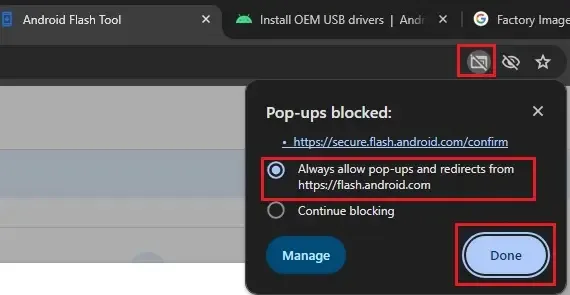
- After that, click on “Allow ADB access“.

- If you encounter the message “No devices available,” proceed by clicking on “Add new device.”

- At this point, your Pixel device should be automatically detected.Select it and then proceed by clicking on “Connect.”

- Ultimately, the status should display as “Connected” or “Auth pending.” On your smartphone, you should receive a prompt. Enable “Always allow…” and then tap on “Allow.”
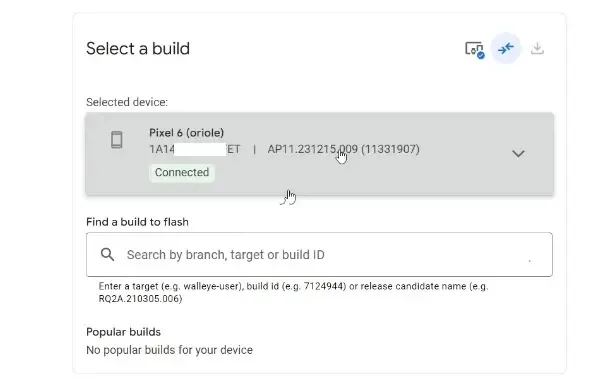
Downgrade From Android 15 to Android 14
- After successfully connecting the device, navigate to “Public releases” and select “Back to Public.”

- At this stage, you should see the stable Android 14 build available for your particular Pixel phone. Proceed by clicking on “Install build.”
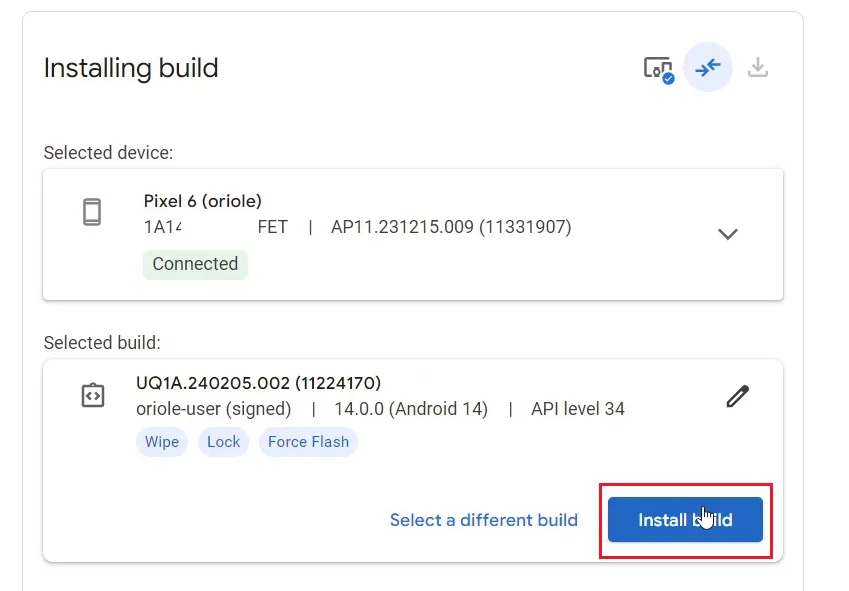
- Confirm the action and agree to the terms. If prompted with “Factory reset required,” proceed by clicking “Yes.”
- Your Pixel phone will now reboot into bootloader mode. If it appears disconnected, you may need to reselect the device in the Android Flash Tool.
- If an “Unlock Bootloader” dialog appears, click on “Start.”

- Stay on your Pixel phone without disconnecting it. Use the volume button to navigate to “Unlock the bootloader” and press the power button to select it.
- Performing this action will unlock the bootloader on your Pixel phone.
- The Android Flash Tool will commence downloading the latest Android 14 build. It will then automatically install Android 14, replacing the Android 15 DP1 build.
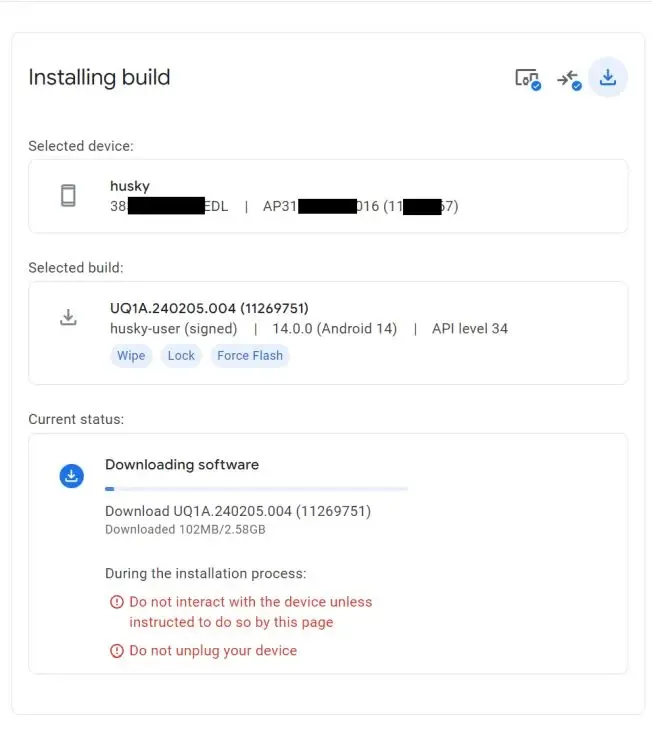
- Following the installation, you will receive a prompt to “Lock Device.”. Click on “Start“.

- Return to your Pixel device and utilize the volume button to navigate to “Lock the bootloader.” Confirm this selection by pressing the power button.
- On the Android Flash Tool, click on “Done” to complete the process.
- You can now disconnect your smartphone. Press the power button to initiate the restart of your Pixel phone.
- Congratulations! you have successfully reverted from Android 15 to Android 14.

Install Android 14 Manually and Replace Android 15
Set Up ADB
- Begin by installing ADB on your computer. Detailed tutorials are available for Windows, macOS, ChromeOS, and Linux computers.
- Next, navigate to the provided link and scroll down to find the Android 14 factory image for your specific Pixel device.
- Click on the “Link” to initiate the download of the image file.

- Now, unzip the contents of the image ZIP file and copy all of them into the “platform-tools” folder.

- Then, on your Pixel phone, navigate to “Developer options” in Settings and ensure that “OEM unlocking” is enabled.

Unlock the Bootloader
- Assuming ADB is installed and USB debugging is enabled as per the provided guide, connect your Pixel phone to your computer.
- Open a command prompt or terminal window and execute the command “adb devices” to verify the connection.
- Upon confirming the connection with a device serial number displayed, proceed to run the following command to boot your Pixel phone into the bootloader:

- Following that, execute the command below to unlock the bootloader.
fastboot flashing unlock

- Subsequently, on your Pixel phone, use the volume button to navigate to “Unlock the bootloader” option. Then, press the power button to confirm your selection.
Flash Android 14 Build
- After successfully unlocking the bootloader, your phone will either restart automatically or you can manually press the power button to start the device. Upon booting up, refrain from adding your Google account or PIN. Instead, proceed to enable USB debugging once again under the Developer options.

- Once again, run “adb devices” to confirm the connection, then execute the command below to return to the bootloader.
adb reboot bootloader
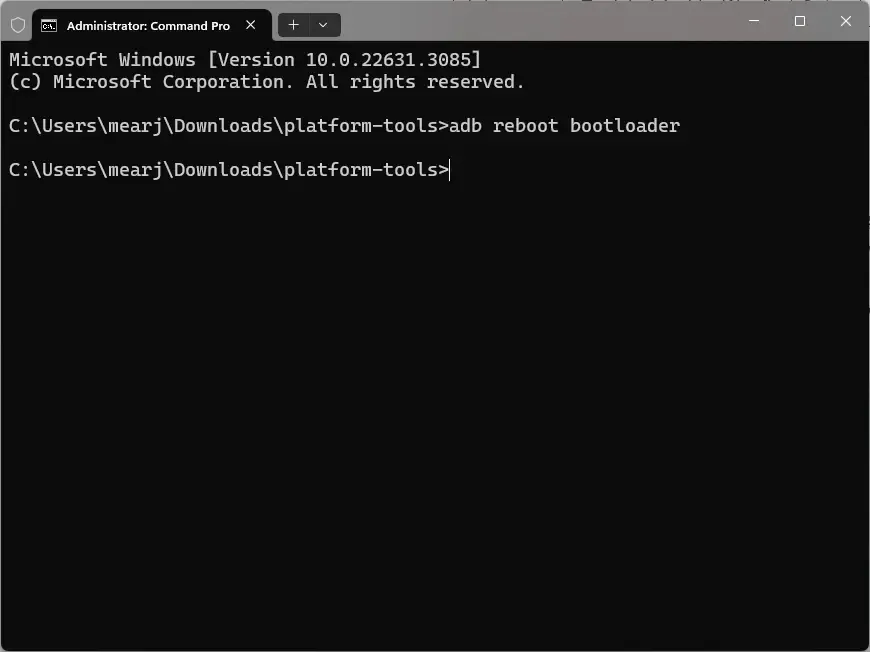
- In the bootloader mode, execute “fastboot devices” to ensure your device is detected. It should return an output. If not detected, refer to our tutorial for troubleshooting steps.
- Once the connection is confirmed, proceed to run the following command to install Android 14 and erase Android 15 from your Pixel device.Ensure you’re running the Terminal/CMD from the Platform-tools folder and that all contents of the factory image are copied to the Platform-tools folder.
flash-all

- After the flashing process completes, the device will restart with the Android 14 build installed. Alternatively, you can press the power button to manually start the device.
Lock the Bootloader
- Since the bootloader is unlocked, proceed to relock it by enabling USB debugging again from the Developer options in Settings.
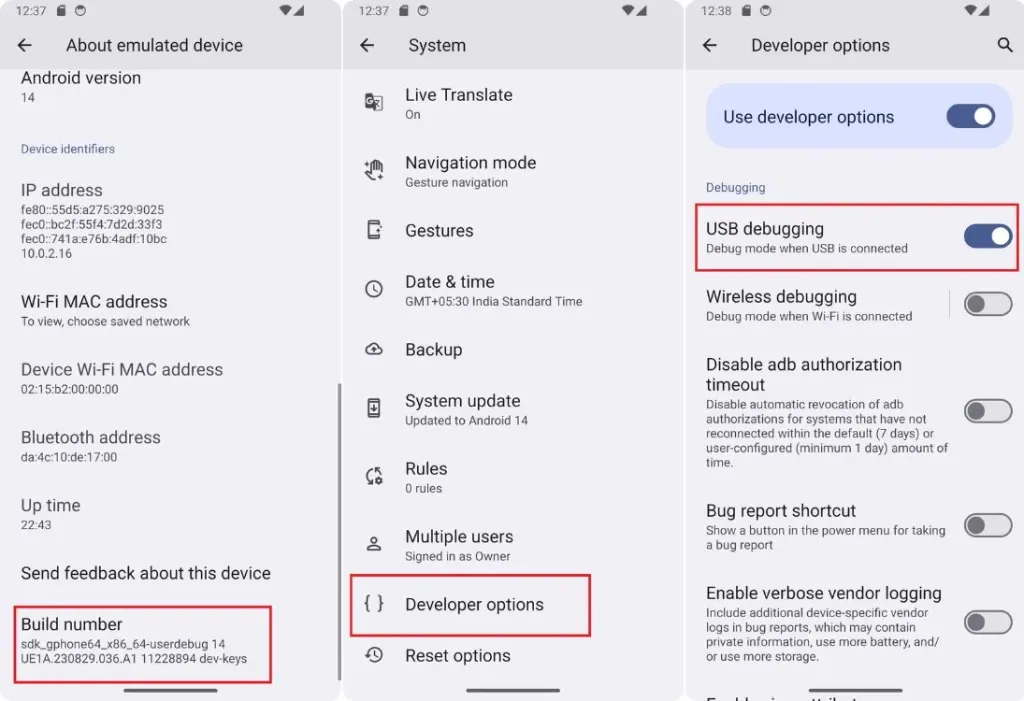
- Confirm the connection by running “adb devices,” then execute the following command to boot into the bootloader.
adb reboot bootloader
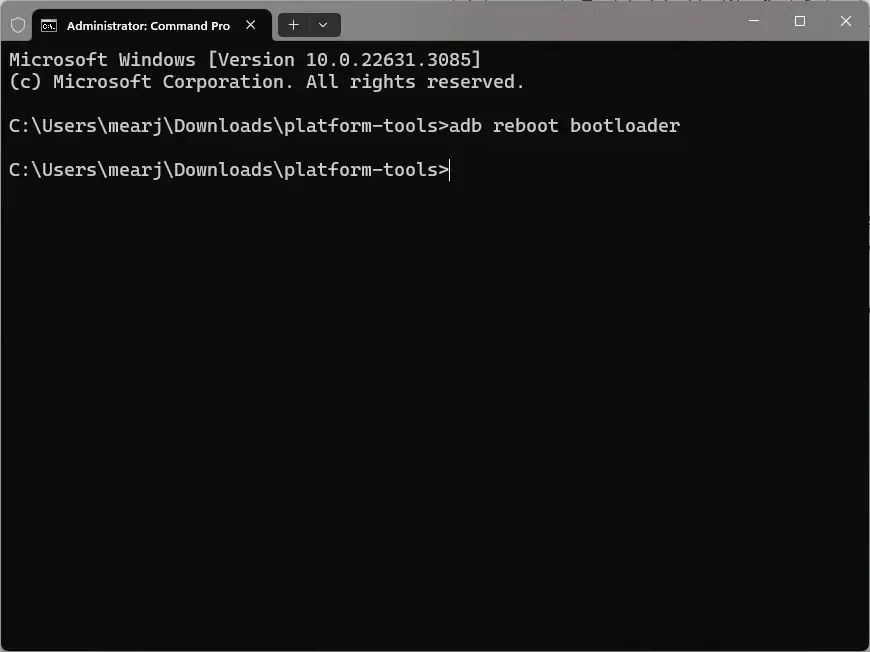
- Once in the bootloader, execute the command below to lock the bootloader of your Pixel phone.
fastboot flashing lock

- Following this, press the power button to initiate the start-up process for your device. Congratulations, you have now completed the successful downgrade from Android 15 to the stable Android 14 build. Feel free to disconnect your phone from the computer and proceed with setting up the device according to your preferences.
These are the two methods available for downgrading from Android 15 beta to the stable Android 14 build on your Pixel phone. If you encounter any challenges with ADB or fastboot during the process of rolling back from Android 15, please feel free to share your concerns in the comment section below.



